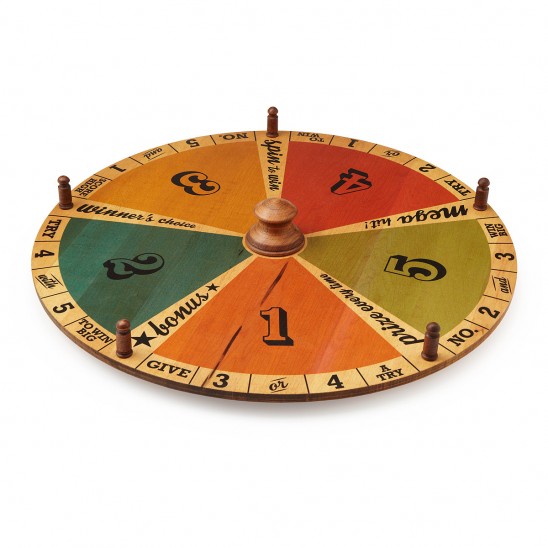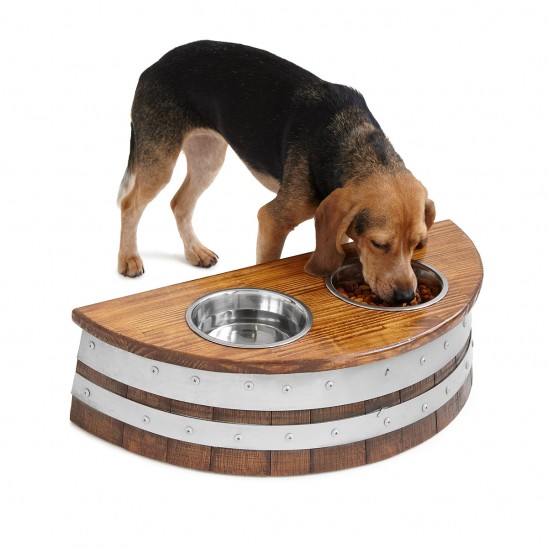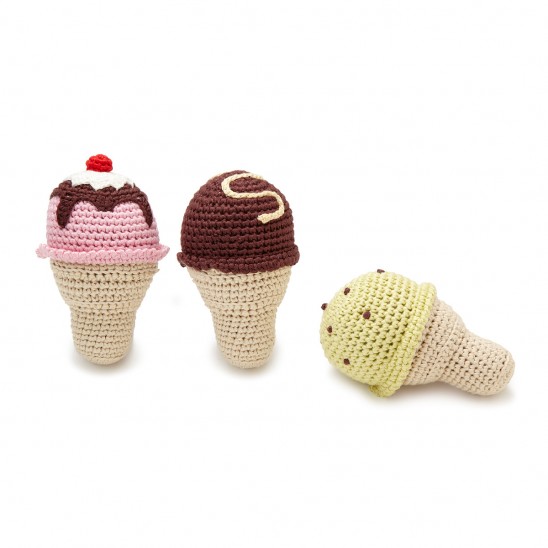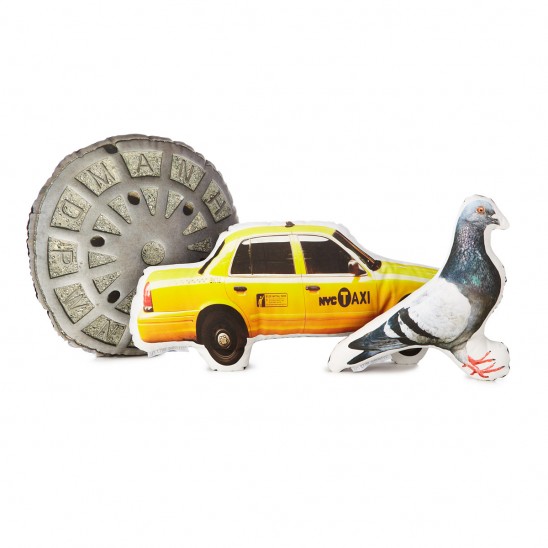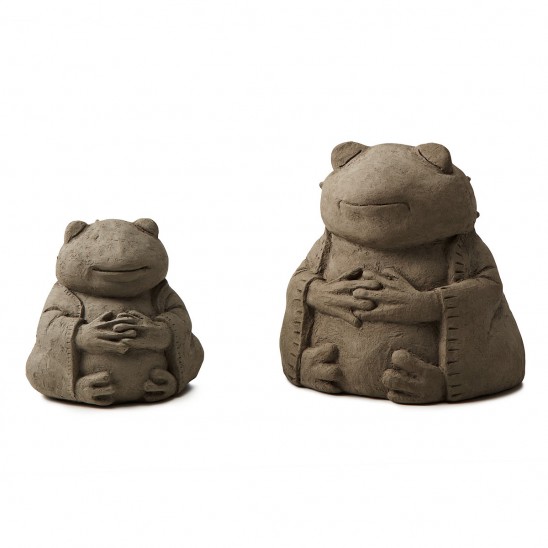 Both, because science! There are five known species of freeze-tolerant frogs in North America. Once winter hits, if the cold-blooded creatures can’t dig down enough into the soil to avoid the ice, they simply freeze over. Once the ice hits the skin, sugar is released from the liver and carried through the bloodstream to keep cells from dehydrating and shrinking. Eventually the heart stops and all other organs stop functioning. The frog doesn’t use oxygen and it appears dead. But then! The frogcicle melts and begins to thaw out, replacing damaged cells. He’s free to hop another day! The next time you’re trudging through knee-deep snow, feel free to be jealous of this hibernation tactic.
Both, because science! There are five known species of freeze-tolerant frogs in North America. Once winter hits, if the cold-blooded creatures can’t dig down enough into the soil to avoid the ice, they simply freeze over. Once the ice hits the skin, sugar is released from the liver and carried through the bloodstream to keep cells from dehydrating and shrinking. Eventually the heart stops and all other organs stop functioning. The frog doesn’t use oxygen and it appears dead. But then! The frogcicle melts and begins to thaw out, replacing damaged cells. He’s free to hop another day! The next time you’re trudging through knee-deep snow, feel free to be jealous of this hibernation tactic.
It’s a Christmas epiphany! From Dasher and Dancer to Comet and Cupid, the gender-neutral names and majestic antlers of Santa’s reindeer suggested that they were predominantly male. Take a closer look, however, and you’ll see that female reindeer are not only better equipped for the midnight flight, but they also fit the classic description of Santa’s sleigh pullers perfectly. Around Christmas time in the wild, the average male reindeer can carry as little as 5% body fat, while the female has about 50%. These extra layers keep them extra warm in temperatures as low as minus 45 degrees Fahrenheit—an advantage that would definitely come in handy while flying all over the world. But the ultimate proof that Santa’s reindeer are female is the iconic silhouette. Around Christmas, male reindeer lose their antlers, which means that those antlered reindeer in the sky have to be ladies! How’s that for a little bit of girl power with your holiday cheer?
That, like your eligibility for the Olympics, depends on your age. During the 1940s, studies showed that 75% of Americans reported rarely or never seeing any color in their dreams. Today, those numbers are reversed. One big reason is traced back to our sources of entertainment—we watch TV in HD color, we dream in HD color. In more recent studies, people 25 and younger report never dreaming in black and white, whereas people over 55 reported to dreaming in black and white a quarter of the time, which is linked to childhood exposure to black and white television. The jury’s still out on what childhood exposure to birthday clowns can do to your dreams.
The numbered game of chance we know and love has been around in some form since the early 1500s in Italy. It was known as a “lotto” game and took on many forms, including educational variations that taught children to recognize numbers. Around the early 1900s, a form of the game called “Beano” became very popular. Players would mark their cards with beans, and once a row was completed, they’d yell “BEANO!” In 1929, toy salesman Edwin Lowe stopped in on a Beano game in Georgia. After seeing people get so competitive over the fate of a few beans, he was eager to play the game back at home with his friends. He made some cards and let the games begin. Needless to say the game got spirited, as anyone who has waited six turns for a darn N22 would understand. When one of Lowe’s friends finally hit Beano, she leapt to her feet, tongue-tied with excitement. She stammered “B-B-B-Biiingo?!” Clearly a more snappy exclamation than “beano,” BINGO stuck, and Lowe made the first official BINGO game shortly after.
If you thought you were the only one with an insuppressible urge to squeeze the cute out of a puppy, kitten, or baby, you’re not alone. Dubbed, “cute aggression” by a recent Yale study, the irresistible phenomenon that makes you want to squeeze a bulldog’s face while screaming about his “handsome wrinkle head!!!” is something we all struggle with. To better understand this condition, Yale psychologists gave study participants a roll of bubble wrap and played a slide show of both adorable and run-of-the-mill photos. Needless to say, there were significantly more pops at the sight of a chubby baby trying to roll over or a kitten falling into a basket of yarn. Psychologists think this could be a protective response, or the brain’s way of venting extreme feelings of giddiness and happiness. More studies are needed to see why “squeezing” is the preferred reaction to cute, so we’ll need a shipment of tiny puppies chasing their tails, thanks.
Uncommon Knowledge: Can ice cream get you through a cold winter?
November 26, 2014Ice cream has long been synonymous with lazy summer afternoons and picnics on the beach. However, studies have shown that folks in the Northeastern states are the largest consumers of ice cream in the U.S. Given the Northeast’s familiarity with bitter cold winters and icy Nor’easters, you would think that roughly six months of coats and boots would render ice cream a mere glimmer of hope on a distant July day. However, the fat content in ice cream actually makes your body warmer. The temperature difference certainly offers a cooling sensation; however once your body starts to digest, your body has to produce a lot more energy to break down the fat. This causes a rise in body temperature. This probably isn’t the sole reason New Yorkers, Bostonians, and Mainers reach for frozen pints while the snow comes down, but it’s certainly a good excuse.
You’ve fed baby ducklings, ogled puppies at the dog run, now where are all the baby pigeons hiding? Considering the hordes of pigeons in city squares and public parks, you’d think you’d see a couple of little ones scampering about. Turns out baby pigeons, or squabs, are kept safely in their nests for quite some time. Known as Rock Doves, pigeons build their nests in crevices that are tough to spot. Once the squabs hatch, they stay in the nest for four to six weeks, until they’re roughly the same size as an adult. After this, they enter their rebellious teen phase where they’re too cool to be seen with their parents and join their own flock. You can spot these angsty teens by the few downy feathers poking out from the back of their necks and their subtle eye roll.
Some might call the debate between creamy New England clam chowder and tomato-based Manhattan clam chowder a bit heated. The creamy (original) clam chowder has been around since at least the 1830s and the recipe has gone relatively unchanged. However, a few decades later, a burgeoning Italian population in New York City began using tomatoes in their chowders, thus thinning it out and giving it a red hue. Following this, chowder was added to the long list of things New Yorkers and Bostonians argued about for quite some time until a group of hardened New Englanders had had enough. In 1939, a bill was introduced in the Maine legislature that made it illegal to add tomatoes to the storied recipe. Whether a Maine restaurant could feasibly get fined today for serving up chowder Manhattan-style is debatable. However, you’d be hard-pressed to find a chowder lover from Portland to Providence who wouldn’t be at least a little irked.



